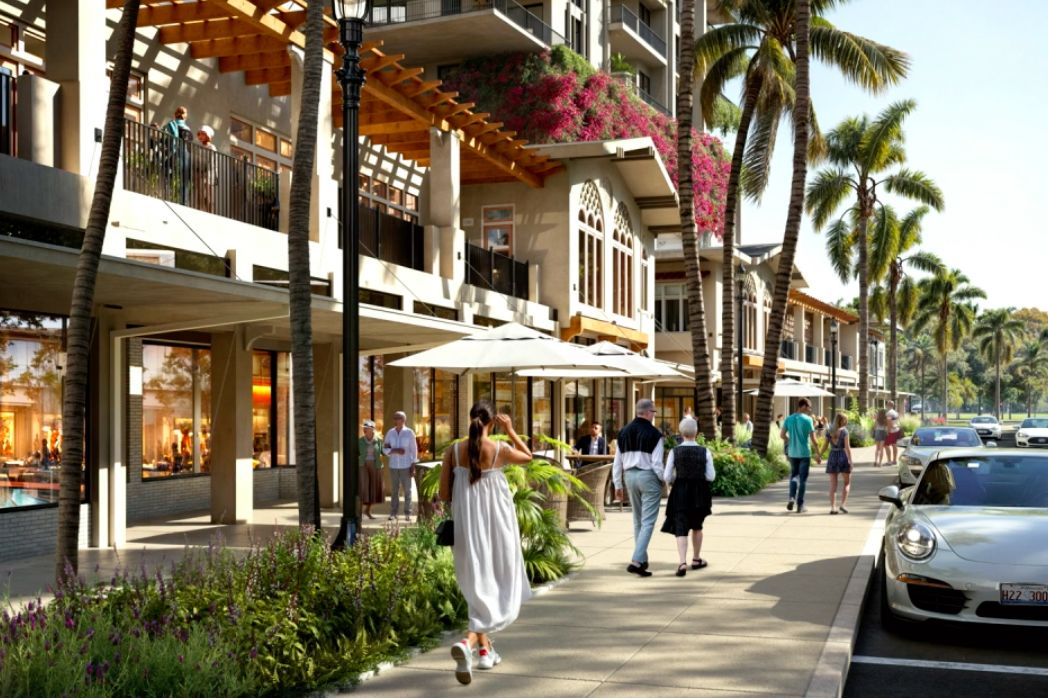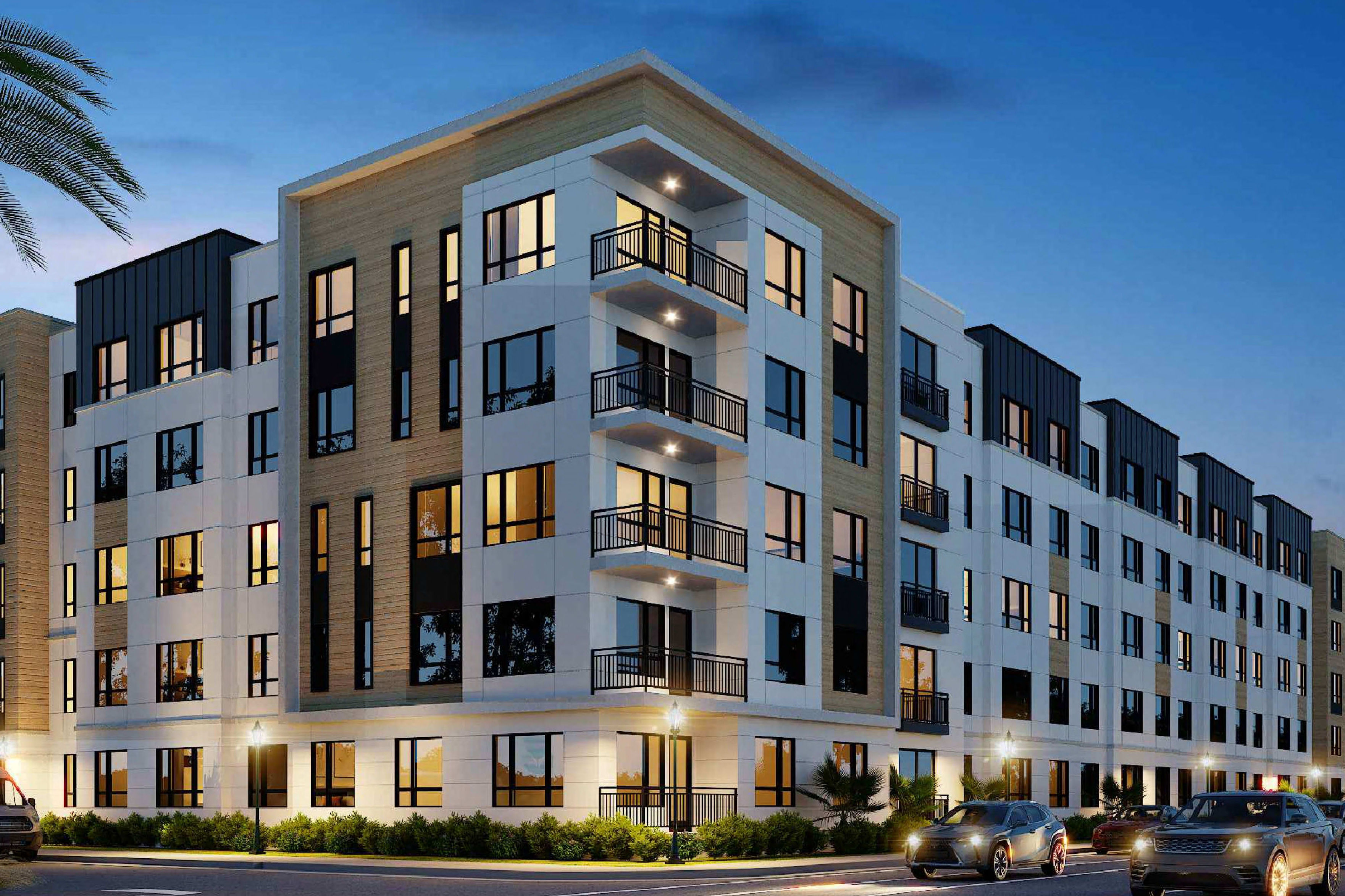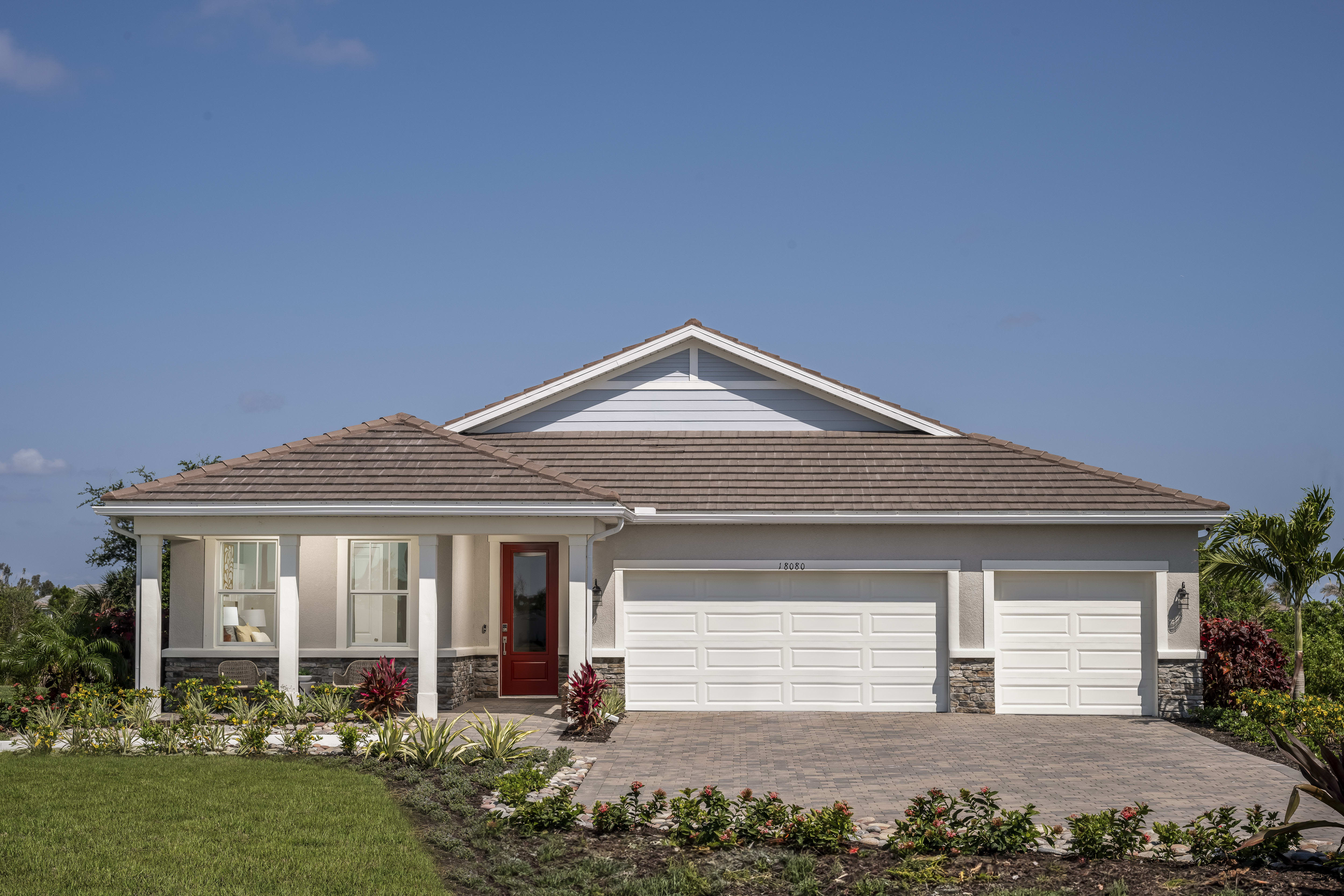County Plans to Sell Historic Vamo Drive Home to Pay for Upgrades to Nearby Park

Funding the development of Vamo Drive Park will include selling a historic home on the land, with restrictions that protect it from demolition.
Image: Courtesy Photo
Vamo Drive Park is a quiet slice of Old Florida that you won’t find on the cover of tourism brochures, but you may soon find one of the street's historic homes there on Zillow.
The house sits on almost three acres of land Sarasota County purchased in 2018 for $2,725,000 million as part of its Neighborhood Parkland Acquisition Program that focuses on acquiring land for neighborhood parks. The property has a mangrove shoreline, 350 feet of waterfront, old oak trees, a lawn area, an old dock and two historic homes.
One is a two-story lodge built in 1900 and located at 1700 Vamo Drive, and the other is one of the original Mediterranean Revival homes the neighborhood is known for, built in 1925 and located at 1710 Vamo Drive.
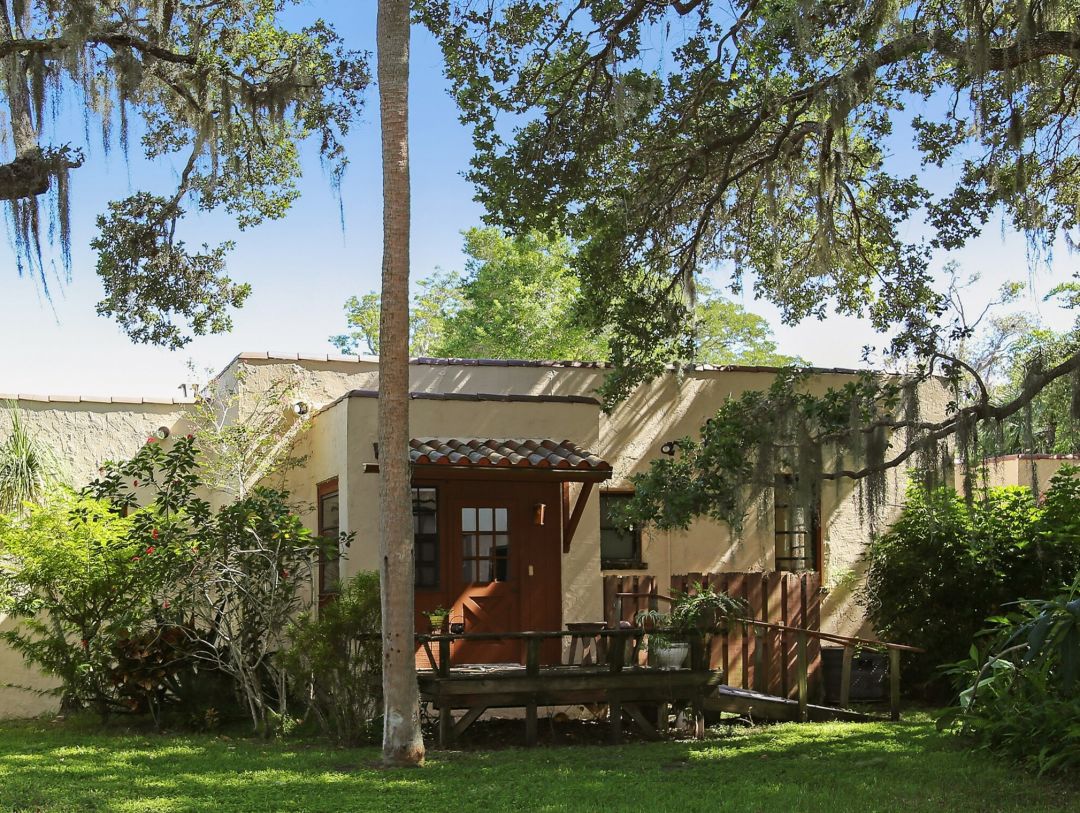
Sarasota County plans to sell this Mediterranean Revival home on Vamo Drive. Proceeds will help expand the nearby park.
Image: Courtesy Photo
The park at the end of the street has become a popular kayak launch, and area residents would like to see it grow. A wish list presented at a virtual public meeting hosted by Sarasota County earlier this month included expanded parking, restrooms, benches and restoration of the two historic buildings that come with the land.
Feedback from the meeting, along with findings collected at a February event hosted by the Sarasota Alliance for Historic Preservation and a feasibility report, led to the county's current plan to sell 1710 Vamo Drive as a single-family home, and keep the lodge.
"They’re exploring the idea of an environmental or natural center that would provide educational information about the mangroves and the bay and the settlement era community,” says Erin DiFazio, a Sarasota realtor and board president of the Sarasota Alliance for Historic Preservation. “The lodge is one of only a handful of settlement-era structures remaining in the county and the only standing example of the original community of Bayonne.”
Although the sale price of the Mediterranean Revival home has yet to be determined, the eventual proceeds will “help us develop the park,” says Nicole Rissler, director of the county's Parks, Recreation and Natural Resources department
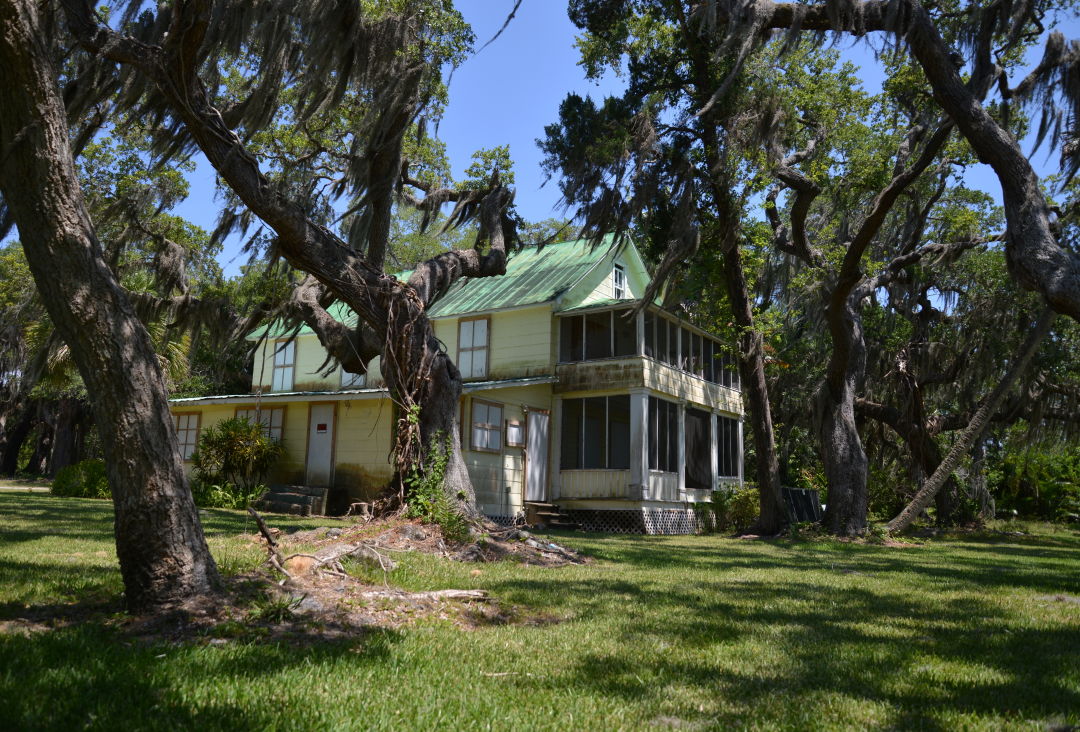
The two-story, wood frame lodge was built in 1900, and may serve as a future informational hub for visitors of Vamo Park.
Image: Courtesy Photo
Real estate developers Bessie Gibson, of Virginia, and A.A. Wren, of Missouri, originally bought the land in 1923 from the estate trust of Bertha Palmer, the Chicago socialite and businesswoman who owned approximately 140,000 acres of land in and around Sarasota County at the turn of the century and helped establish Sarasota as a top winter retreat.
The area was originally called Bayonne, but the developers renamed it Vamo in an abbreviated marriage of their states of origin, V.A. for Virginia; M.O. for Missouri. The following year, they built 13 homes on Vamo Drive adjacent to the bay.
True to the times, the houses were all built in the same style, with barrel roof tiles, stucco walls and wrought-iron details, and they still stand to this day. The developers advertised the homes as “ultra-modern bungalows by promoting amenities like screened porches, hot water and built in storage,” says Robert Bendus, Sarasota County’s manager of historical resources. Other cutting-edge technology at the time included a “white way lighting system”—today known as street lights. They also offered phone lines that would give residents call service like there was in the City of Sarasota.
It’s unknown who built the two-story lodge in 1900, but it was the clubhouse for the 20 families who lived in the Vamo neighborhood at the time.
“By 1926, they were talking about expanding Vamo into a larger municipality and adding a school and businesses. Then the Depression hit and it all dried up,” says Bendus. “People abandoned everything, including the homes at Vamo. Investors who had bought lots no longer had the money to build. But this road still has those 13 homes intact. That microcosm of 1924 Sarasota survived.”
Until 1936, only 41 people lived in the area. After World War II, military personnel started coming back to Florida and the Sarasota area and moved in. In 1946, Norma and Jack Martin came from Ohio and purchased the lodge on Vamo Drive. As their family grew, they purchased the Mediterranean Revival home in the late '70s and lived there, while their grown kids lived in the lodge. The Martins got into real estate and worked out of their home on Vamo Drive. Norma was known to be the oldest and longest-standing real estate agent in Sarasota County. She died in 2016 at the age of 101, and kept her broker’s license until the end, according to her obituary.
Today the Vamo neighborhood is just north of Osprey, between Sarasota Square Boulevard and Preymore Street. Its west side is perched on the Intracoastal Waterway, and to the east it extends a little beyond McIntosh Road. Except for the historic homes, most of the other houses are Florida ranches and cottages built in the 1950s, '60s, '70s and '80s, along with more recent tear-downs and new homes.
Some area residents, like Robin Williams, were baffled by the county’s plans to sell the Mediterranean Revival home. The county doesn't often dabble in real estate, but it has bought and sold homes in the past. In 2007, after purchasing a home at 50 Southwind Drive in Englewood through the same program that enabled the county to buy the Vamo Park parcel, “the community said they didn't want a park there, so we sold it,” says Rissler. That home sold in 2018.
Williams questions the viability of the lodge, which stands in disrepair and is vulnerable to the elements. She feels the county's decision to sell the Mediterranean Revival home might be hasty without more information about the viability of the lodge.
What price might the Mediterranean Revival home might fetch? “It's hard to say," says DiFazio. "It will have preservation easements which affect value. While it may be in livable condition, it may not be up to the buyer's idea of what they want it to be. It is a very attractive property in an attractive setting, but it's also in a flood zone."
Based on the current housing market, the home may fetch a little more than $500,000 based on a comparable listing across the street built during the same era and in the same style that’s now pending for $775,000. While the buyer of the home could update the interior or build an addition, it would be barred from demolition.
